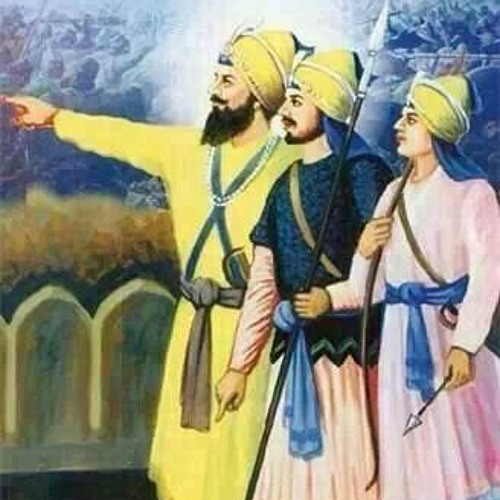
Sahibzada Ajit Singh (11 February 1687 –23 December 1704), also referred to with honorifics as Sahibzada Ajit Singh or Baba Ajit Singh, was the eldest son of Guru Gobind Singh and the son of Mata Sundari. His younger brothers were Jujhar Singh, Zorawar Singh and Fateh Singh, but they had been born to Mata Jito. He was killed in the Second Battle of Chamkaur along with his brother Jujhar Singh. His other two brothers, Zorawar Singh and Fateh Singh, seven and five years old, respectively, were bricked alive at Fatehgarh Sahib on order of Wazir Khan, governor of Sirhind-Fategarh. Ajit Singh was born to Mata Sundari and Guru Gobind Singh at Paonta Sahib on 11 February 1687. He was brought up in Anandpur, where his education included religious texts, history, and philosophy. He received training from Jeevan Singh (Bhai Jaita) in riding and the martial arts of swordsmanship and archery.Ajit Singh led one of the sallies and laid down his life fighting in the thick of the battle. Gurdwara Katalgarh now marks the spot where he fell, followed by Jujhar Singh who led the next sally. Their bodies and the bodies of the other martyr Sikhs were cremated by Sharan Kaur Pabla. Sahibzada Jujhar Singh (27 September 1691 - 7 December 1705), the second son of Guru Gobind Singh, was born to Mata Jito ji (also known as Mata Sundari ji) at Anandpur on 27 September 1691 (as per Nanakshahi calendar). Jujhar Singh led the last sally towards the end of the day (7 December 1705), and laid down his life fighting near the place where he had earlier seen his elder brother fall. He was just 14 years old when he gave his life while his older brother was 18 years old when they gave their lives for their faith Like his elder brother Ajit Singh, he started training in the fighting skills (Gatka) as soon as he started learning the religious texts aged about 4 to 5 years. In 1699, when he was eight years old, he received holy Amrit at the rites of Khalsa initiation, called Amrit Sanskar. By the time it became necessary to leave Anandpur under the pressure of a besieging host in December 1705, Jujhar Singh, nearing the completion of his fifteenth year, was an experienced young warrior, strong and fearless. He was one of the band that successfully waded through the flooded Sarsa rivulet on horseback and made good their way to Chamkaur by nightfall on 6 December 1705, with the adversary in hot pursuit. With little respite during the night, he participated in the next day's battle warding off assault after assault upon the "garhi", the fortified house in which Guru Gobind Singh had, along with his 40 Sikhs and two sons, taken shelter.
